Queen Isabella I (“The Catholic”)
Queen of Castile; born in the town of Madrigal de las Altas Torres, 22 April, 1451; died a little before noon, 26 November, 1504, in the castle of La Mota, which still stands at Medina del Campo (Valladolid).
The death of Queen Isabella the Catholic. Painted by Eduardo Rosales
She was the daughter of John II, King of Castile, by his second wife, Isabella of Portugal. Being only a little more than three years of age when her father died (1454), she was brought up carefully and piously by her mother, at Arevalo, until her thirteenth year. Her brother, King Henry IV, then took her, together with her other brother, Alfonso, to his court, on the pretext of completing her education, but in reality, as Flórez tells us, to prevent the two royal children from serving as a standard to which the discontented nobles might rally.
The Castilian nobles had been constantly increasing in power during the repeated long minorities through which the crown had passed, and had taken advantage of the weakness of kings like Henry II and John II. At this period they had reached the point of completely stripping the throne of its authority. They availed themselves of Henry IV’s incredible imbecility and of the scandalous relations between Joan of Portugal, his second wife, and his favourite, Beltran de la Cueva. Defeated at Olmedo, and deprived of their leader, the Infante Alfonso, who died – by poison, as was believed – on 5 July, 1468, they sought to obtain the crown for the Infanta Isabella, rejecting the king’s presumptive daughter, Joan, who was called “La Beltraneja” on the supposition that Don Beltran was her real father.
On this occasion Isabella gave one of the earliest proofs of her great qualities, refusing the usurped crown offered to her, and declaring that never while her brother lived would she accept the title of queen. The king, on his part, committed the astounding folly of recognizing Isabella as his immediate heiress, to the exclusion of Joan. Historians have generally been willing to interpret this act of Henry IV as an implicit acknowledgment of his own dishonour. To be strictly just, however, it was not so, for even if Joan was his daughter in fact, as she was by juridical presumption, he might have yielded to the violence of the nobles, who sought to give the crown to Isabella immediately, and compromised with them by making her his heir, as he did in “the Inn of the Bulls” of Guisando (la Venta de los Toros), 19 September, 1468. For a year before this, Isabella had been living at Segovia, apart from the court, which resided at Toledo; after the conclusion of the pact she was at odds with her brother, the king on account of his plan for her marriage.
Isabella the Catholic, Queen of Castile. Painting by Antonio del Rincón
In 1460 Henry had already offered the hand of Isabella to Don Carlos, Prince of Viana, the eldest son of John II of Aragon, and heir, at the same time, to the Kingdom of Navarre. This Henry did in spite of the opposition of the King of Aragon, who wished to obtain the hand of Isabella (which carried with it the crown of Castile) for his younger son, Ferdinand. Negotiations were protracted until the unhappy death of the Prince of Viana. In 1465 an attempt was made to arrange the marriage between Isabella and Alfonso V of Portugal, but the princess had already chosen Ferdinand of Aragon for a husband and was therefore opposed to this alliance. For the same reason she subsequently refused to marry Don Pedro Girón, Master of Calatrava, a member of the powerful Pacheco family, whom the king sought to win over by this means.
Other aspirants for Isabella’a hand were Richard, Duke of Gloucester, brother of Edward IV of England, and the Duke of Guienne, brother of Louis XI of France. The Cortes was assembled at Ocaña in 1469 to ratify the Pact of Guisando, when an embassy arrived from Portugal to renew the suit of Alfonso V for the hand of Isabella. When she declined this alliance, the king went so far as to threaten her with imprisonment in the Alcazar of Madrid, and although fear of the Infanta’s partisans prevented him from carrying out this threat, he exacted of his sister a promise not to enter into any matrimonial negotiations during his absence in Andalusia, whither he was on the point of setting out. But Isabella, as soon as she was left alone, removed with the aid of the Archbishop of Toledo and the Admiral of Castile, Don Fadrique Enríquez, to Madrigal and thence to Valladolid, and from there sent Gutierre de Cárdenas and Alfonso de Palencia in search of Ferdinand, who had been proclaimed King of Sicily and heir of the Aragonese monarchy. Ferdinand, after a journey the story of which reads like a novel, for its perils and its dramatic interest, was married to Isabella in the palace of Juan de Vivero, in 1469.
Monument to Isabella of Castile, erected in Madrid in 1883. The Queen is guided by Gonzalo de Córdoba.
On the death of Henry IV, Isabella, who was then at Segovia, was proclaimed Queen of Castile. But La Beltraneja had been betrothed to Alfonso V of Portugal, and Henry, revoking the Pact of Guisando, had caused her to be proclaimed heiress of his dominions. The Archbishop of Toledo, the Marqués de Villena, the Master of Calatrava, and other nobles, who in her father’s lifetime had denied La Beltraneja’s legitimacy, now defended her claims. And thus was begun a war between Spain and Portugal which lasted five years, ending with the peace of 1479, when a double alliance was arranged.
La Beltraneja, however, abandoned her claims, taking the veil in the monastery of Santa Clara of Coimbra (1480), and with that event the right of Isabella to the throne of Castile became unquestioned. Ferdinand had meanwhile succeeded to the throne of Aragon, and thus the definitive unity of the Spanish nation was accomplished in the two monarchs to whom a Spanish pope, Alexander VI, gave the title of “Catholic” which the Kings of Spain still bear. Isabella displayed her prudence and gentleness – qualities which she possessed in a degree seldom equalled – in the agreement she made with Ferdinand as to the government of their dominions: they were to hold equal authority, a principle expressed in the device or motto, “Tanto monta, monta tanto – Isabel como Fernando (As much as the one is worth so much is the other – Isabella as Fernando)”.
Education of Don Juan. The son of King Ferdinand and Queen Isabella. Painting by Salvador Martínez Cubells
The harmonious union of the peoples and the crowns being thus realized, it was necessary to reduce the power of the nobles, who had acquired a position almost independent of the crown and rendered good government difficult. Towards this object the Catholic sovereigns directed their efforts; among the means which they took should be mentioned chiefly:
(1) the establishment of the Santa Hermandad (Holy Brotherhood), a kind of permanent military force, very completely organized, supported by the municipal councils, and intended for the protection of persons and property against the violence of the nobles;
(2) an improved and properly ordered administration of justice with a wise organization of the tribunals, the establishment of the Chancery at Valladolid, and the promulgation of the royal edicts generally called “Edicts of Montalvo” after the jurisconsult who drew them up;
(3) the abolition of the right of coining money, which certain individuals held, and the regulation of the currency laws so as to facilitate commerce;
(4) the revocation of extravagant grants made to certain nobles during the reigns of the late monarchs, the demolition of their castles, which constituted a menace to public peace, and the vesting in the crown of the masterships of military orders. To preserve the purity of the Faith and religious unity, against the intrigues of the Jews, who were employing the influence of their wealth and their usurious dealings to pervert Christians, the Catholic sovereigns solicited of Pope Sixtus IV the establishment of the Inquisition.
The Capitulation of Granada, Painting by Francisco Pradilla y Ortiz. Boabdil gives the keys of the city to King Ferdinand and Queen Isabella
Their government thus strengthened at home, the sovereigns proceeded to bring to a completion, by the conquest of Granada, the great work of reconquest which had been virtually at a standstill since the time of Alfonso XI. The taking of Zahara, of which the Moors possessed themselves by surprise, afforded an occasion for the war; which opened happily with the conquest of Alhama (March, 1482). The Christians were favoured by the internal troubles of Granada, which were due to the party of the Emir Muley Hassan and his son Boabdil, and, after the death of the former, to the supporters of his uncle Abdallah el Zagal. The sovereigns kept up the war in spite of the serious defeats sustained by them at Ajarquia and Loja, and possessed themselves successively of Coin, Guadix, Almería, Loja, Vélez, Malaga, and Baza. Isabella took a prominent part in this war; not only did she attend to the government of the kingdom, and provide for the support of the army while Ferdinand did battle at its head, but she repeatedly visited the camp to animate the troops by her presence.
This was the case at the siege of Malaga, and at that of Baza, where the stern usages of war did not hinder the Moorish leader, Cid Hiaya, from displaying his chivalry towards the queen. She was in danger of being assassinated by a Mohammedan fanatic before the walls of Malaga, and of perishing in the conflagration of the besieging camp at Granada. In consequence of this conflagration the city of Santa Fe was built, to put an end to the vain hopes of the people of Granada, that the Catholic sovereigns would abandon their enterprise. Granada surrendered 2 January, 1492, and the territorial unity of the Spanish monarchy was established. To protect its normal unity, an edict was issued three months later (31 March) expelling from Spain the Jews (170,000 to 180,000 souls), whose cities had admitted the Mussulman invaders in the eighth century, and who constituted a perpetual danger to the independence and security of the nation.
Queen Isabella pledging her jewels for Columbus' exposition. The original painting was created by artist Antonio Munoz Degrain (1843-1924), c. 1878. Although this painting was displayed at the 1878 Universal Exhibition in Paris, since that time, the painting has disappeared. This painting was the basis for the US commemorative $1 stamp, Isabella Pledging Her Jewels, issued in 1893.
While they were carrying on the war against Granada Christopher Columbus presented himself to the Catholic sovereigns, and to Queen Isabella fell the honour of appreciating the genius who had not been understood at Genoa, at Venice, or in Portugal. Protected first of all by the Spanish friars, he was presented to the queen by her confessor, Padre Hernando Talavera, and Cardinal Mendoza (el Cardenal de España); and with the means which the king and queen procured for him he fitted out the three famous caravels which placed America in communication with the Old World. Sailing, 3 August, 1492, from the port of Palos, he discovered on 12 October – the day on which the feast of Our Lady of the Pillar is observed in Spain – the first of the Bahama Islands.
The return of Christopher Columbus; his audience before King Ferdinand and Queen Isabella. Painting by Eugene Delacroix
Not only did Isabella the Catholic always show herself the protectress of Columbus, but she was also the protectess of the American aborigines against the ill-usage of the colonists and adventurers. In 1503, she organized the Secretariate of Indian Affairs, which was the origin of the Supreme Council of the Indies. Isabella was no less the patroness of the great Cisneros in the reformation of the monasteries of Spain, a work which he accomplished under the authority of Alexander VI given by the Brief of March, 1493, and which anticipated the reform afterwards executed throughout the whole Church. The good government of the Catholic sovereigns brought the prosperity of Spain to its apogee, and inaugurated that country’s Golden Age. The manufacture of cloths and silks developed at Segovia, Medina, Granada, Valencia, and Toledo, as also that of glass and of steel weapons, of leather and silverware. Agriculture prospered, while navigation and commerce rose to an unprecedented height in consequence of the great discoveries of that epoch.
Statue of Queen Isabella the Catholic, in a hallway inside the Palacio Real de Madrid (Royal Palace) in Madrid.
Queen Isabella by her example led the way in fostering the love of study, and in many respects her Court recalls that of Charlemagne. When she was already a grown woman she devoted herself to the study of Latin, and became an eager collector of books, of which she possessed a great number. Her Castilian has been ranked as a standard of the language by the Spanish Royal Academy. She was extremely solicitous for the education of her five children (Isabella, John, Joan, Maria, and Catherine), and in order to educate Prince John with ten other boys, she formed in her palace a school similar to the Palatine School of the Carlovingians. Her daughters, too, attained to a degree of education higher than was usual at that epoch, and they so combined with their learning the industries peculiarly appropriate to their sex, that Ferdinand the Catholic could imitate Charlemagne in using no article of clothing that had not been spun or sewn by his consort and his daughters.
This example of the queen, a model of virtue, piety, and domestic economy, who mended one doublet for her husband the king as often as seven times, exercised a great moral influence on the nobility in discouraging inordinate luxury and vain pastimes. It also fostered learning not only in the universities and among the nobles, but also among women. Some of the latter distinguished themselves by their intellectual attainments – e.g. Beatriz Galinda, called la Latina, Lucia Medrano, and Francisca Nebrija, the Princess Joan and the Princess Catherine (who afterwards became Queen of England), Isabella Vergara, and others who reached great proficiency in philosophy, Latin, and mathematics, and became qualified to fill professional chairs in the universities of Alcalá and Salamanca.
Isabella the Catholic was extremely unhappy in her children. Prince John died in youth, full of the most brilliant promise; Catherine was eventually repudiated by her husband Henry VIII; Joan, heiress to the kingdom, lost her reason. Not the least notable trait in the life of Isabella was the making of that last will and testament, immortalized in Rosales’s picture in the Madrid Museum. Her heart was filled with sympathy for the fate of the American Indians, she charged her successors to protect them and to regard them as they regarded their other subjects, and she pointed out Spain’s mission in Africa – a mission which the Moroccan question has tardily enough brought to the world’s knowledge.
CLEMENCíN, Elogio de la Reyna Católica Da. Isabel in Mem. Acad. de la Historia (Madrid, 1821); FERNÁNDEZ Y GONZÁLEZ, Da. Isabel la Católica (Madrid, 18-); MARTÍNEZ DE VELASCO, Isabel la Católica (Madrid, 1883); RADA Y DELGADO, Retratos de Isabel la Católica in Boletín Acad. de la Historia (Madrid, 1885); MARIANA, LAFUENTE, and other writers in the history of Spain.
RAMÓN RUIZ AMADO (Catholic Encyclopedia)
___________________________
Also of interest:
Isabella the Catholic: majestic and saintly even in death
Isabella the Catholic offers her jewels to fund Columbus’ discovery of America
King Ferdinand and the nobility of Andalucia rush to the aid of Don Roderigo Ponce de Leon in Alhama
Gonzalo de Cordoba storms Huejar to put down a Moorish insurrection
The Great Captain and his form of leadership
August 17 – Her great beauty aroused the jealousy of the queen
Queen Isabella the Catholic resolves to hold Alhama whatever the cost

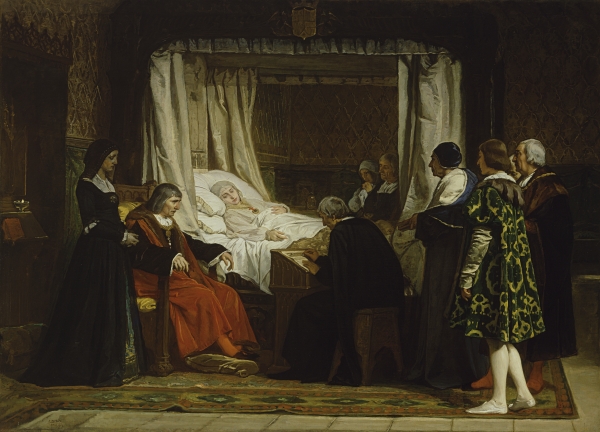
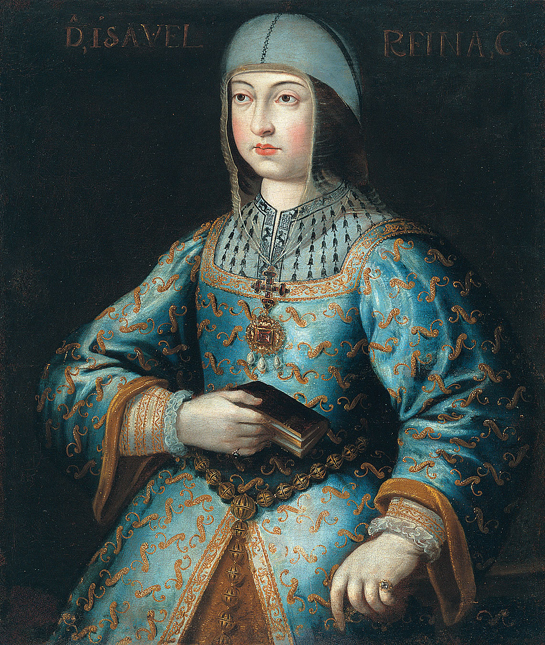
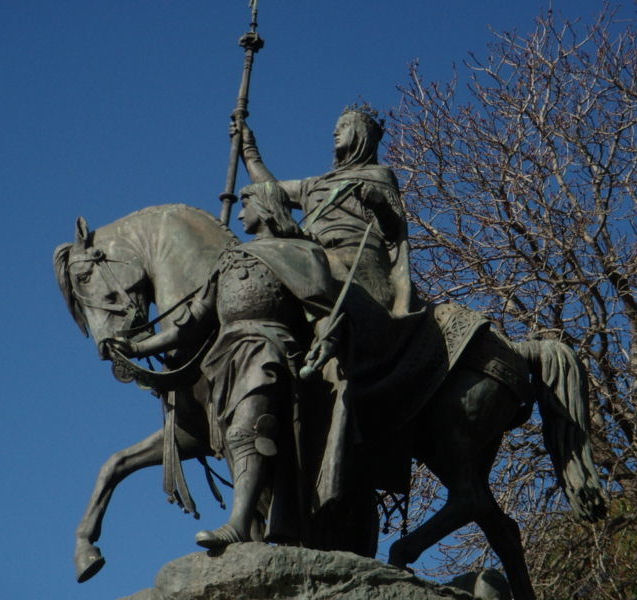
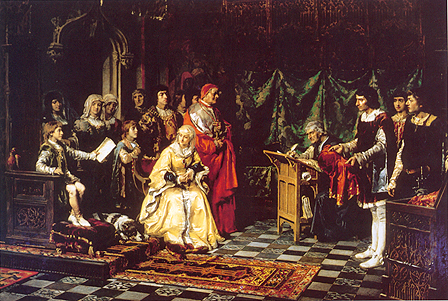
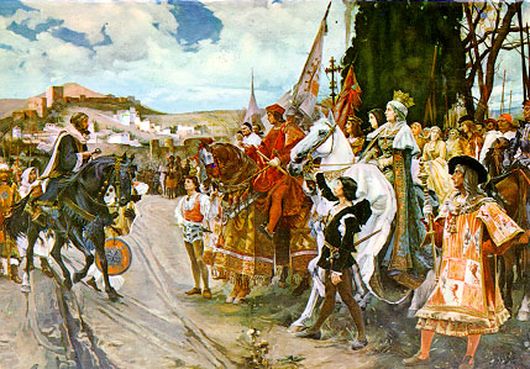
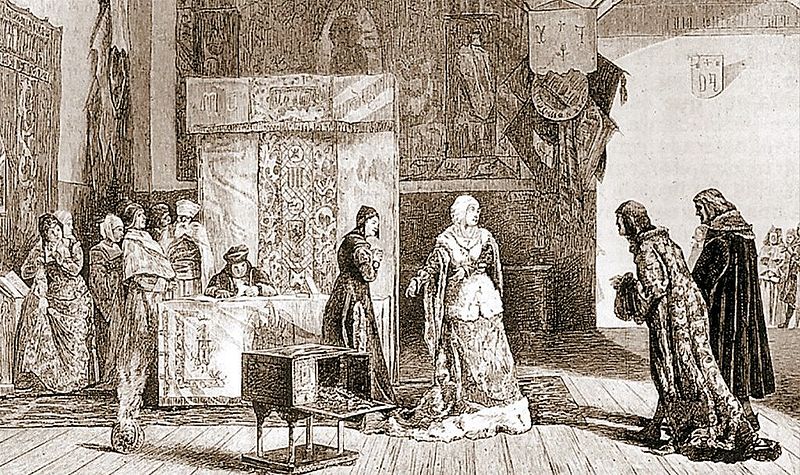
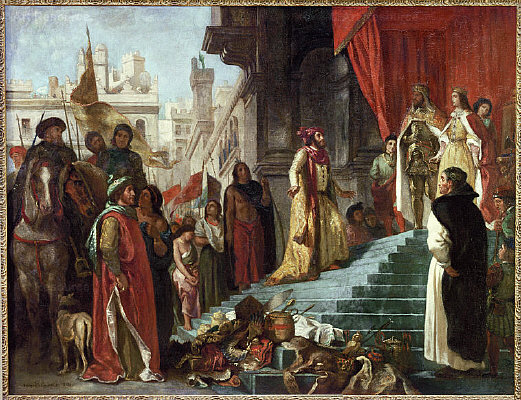
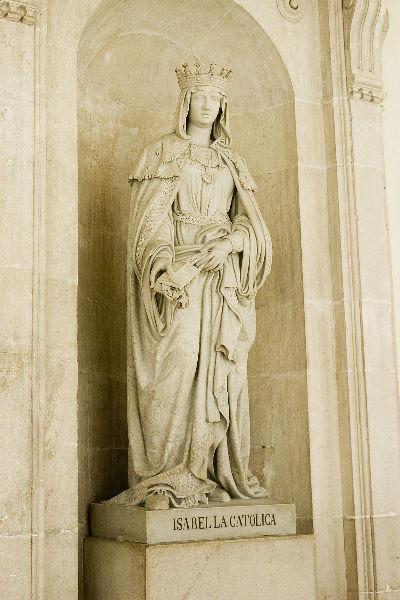
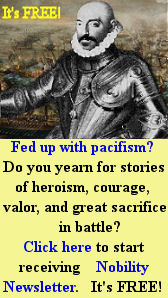
No comments:
Post a Comment